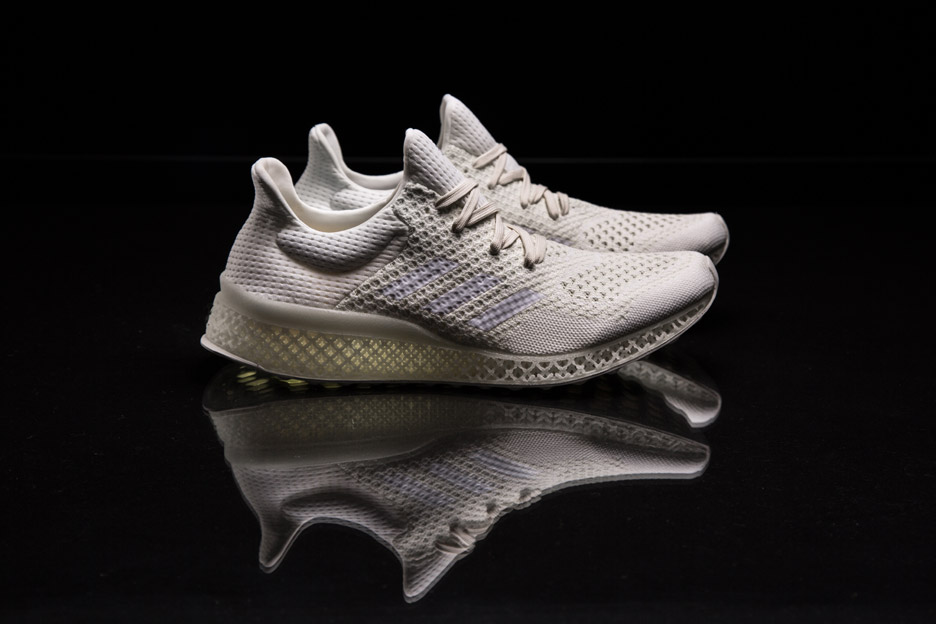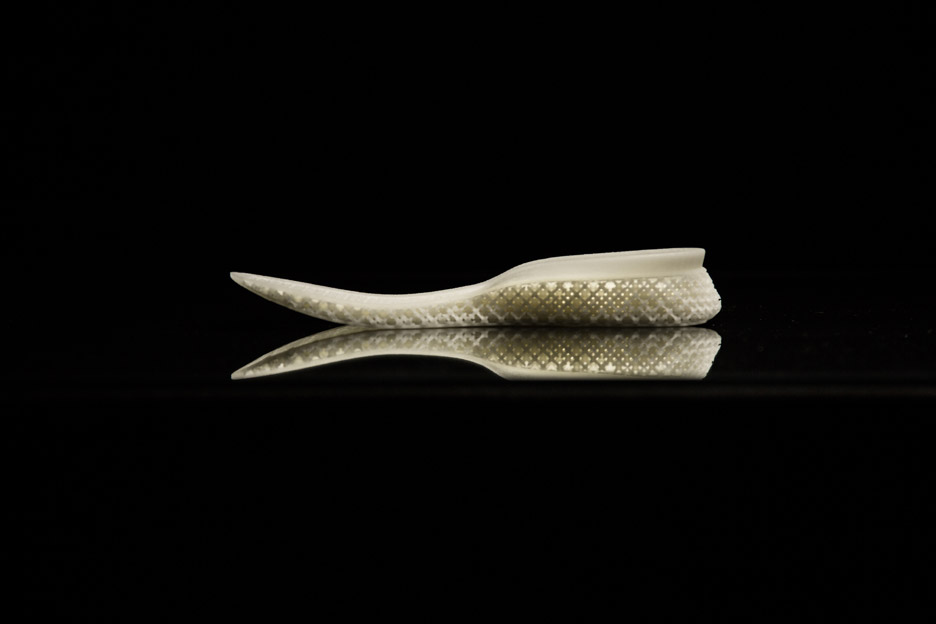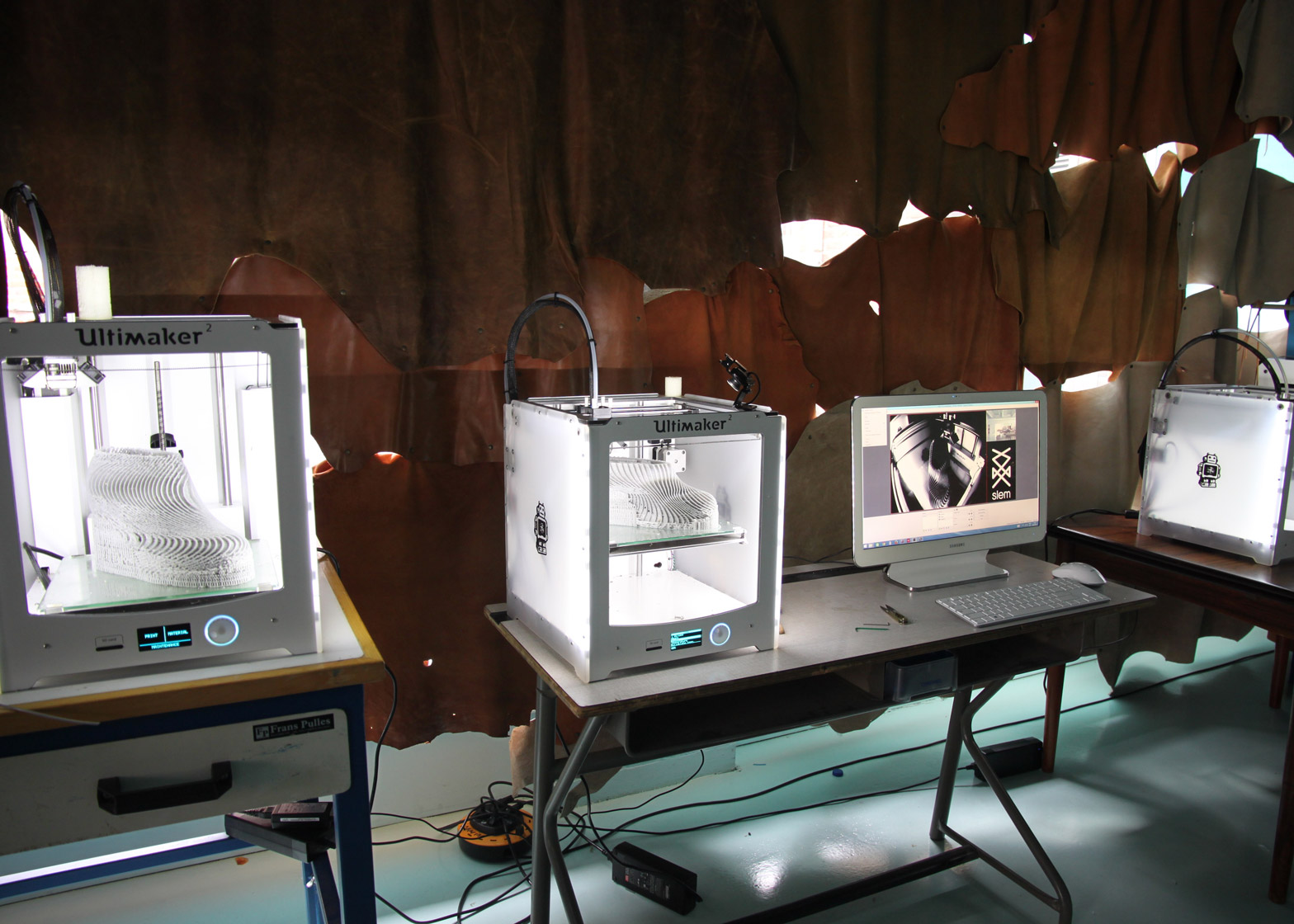Adidas created the Futurcraft outsoles with Materialise inc. to adapt the soles of its sneakers to each of its customers. The outsole is just a prototype for now but Adidas hopes to develop in-store scanners for customer’s feet. So it might be really soon that you could have your tailored oustoles made in your favorite shop!
Imagine, you are having your foot scanned, you are coming back a few hours later or the next day, and you collect your personal pair of shoes, yours only!
The production of the upper (top part of the shoe) will probably be produced like the brand other sneakers, and about those big sport groups production lines, there is a lot to say…
But it would limit shoes waste because one upper can match two or three sizes of soles. A great loss factor for the fashion idustry is precisely the stock segmentation per sizes.
Although 18 pairs of 36 (5.5) remain in stock, if you are a 42 (9.5) and there aren’t any left you can’t buy the leftovers!
Adidas would then reduce its size range for uppers which would adapt to several outsoles produced only on-order.
You have to imagine the support must be sensational for running. We have access to a luxury only athletes had, a perfect fitting.
Still comfy, custom 3D printing can create perfect heels.
Troy Nachtigall scanned Dutch politician Jet Bussemaker to offer her a customized pair. Design might be little impressive and imposing but apparently is flexible (with Filaflex fiber) and does not disintegrate with rubbing. Obviously, it is possible to play with the fiber properties and make flexible areas or rigid areas depending on the needs and the support points of a shoe.
The trio (because Troy worked closely with a designer and an engineer) has pushed further their analysis of the foot anatomy, and propose to adapt the design to the habits, the physical restraints of each person. They are calling the behaviour fit.
I am picturing shoes made for walking, for crouching, for running, for climbing, for sitting…
Production lasted 100 hours, 4 to 5 days, which could be a reasonnable delay to pick-up your “precisely fitted” shoes in store.
Moreover, it is really important to say that the shoe printed this way is made of only one plastic material. It becomes easily recyclable.
It makes the shoe recycling industry move forward a little bit, which is still working on a lot of difficulties. A shoe is made of too many elements, all of a different material, all put together, glued, nailed. Today it is impossible to recycle a shoe without a dedicated industry, and initiatives are rare.
It would take a whole industry to collect, disassemble and sort out all different components to send them to each specific recycling sector.
The chain to be created is huge (we shall not be afraid of words) so it is with a great interest that I put under the spotlights the projects which bypass the problem and work with plastic recycling.
So what do you think? Did you hear about any other project?
Found and commented from Dezeen.com
troy-nachtigall-pauline-van-dongen-leonie-tenthof-van-noorden-3d-printed-high-heels-more-comfortable-than-normal-shoes
adidas-creates-3d-printed-futurecraft-soles-to-mimic-runners-footprints
See you soon!




